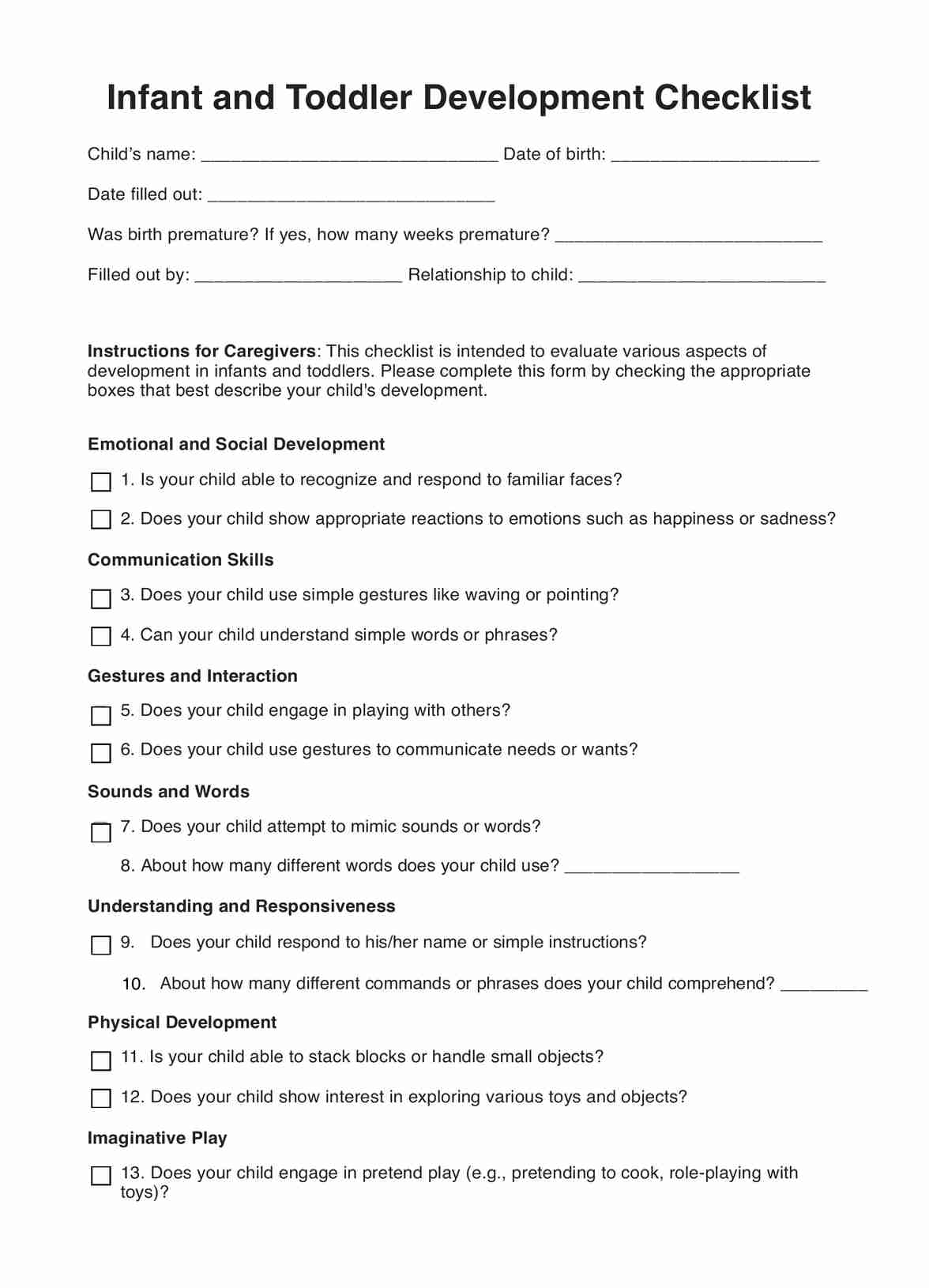The CSBS DP Infant-Toddler Checklist usually takes 10–15 minutes to complete.

CSBS DP Infant-Toddler Checklist
Discover how the CSBS DP Infant-Toddler Checklist can be used for the early detection of developmental concerns—a vital tool for healthcare professionals.
Use Template
CSBS DP Infant-Toddler Checklist Template
Commonly asked questions
The findings are analyzed based on scoring guidelines, with referrals for further evaluation if necessary.
It is commonly used in regular developmental screenings or when there are social or communicative development concerns.
EHR and practice management software
Get started for free
*No credit card required
Free
$0/usd
Unlimited clients
Telehealth
1GB of storage
Client portal text
Automated billing and online payments











